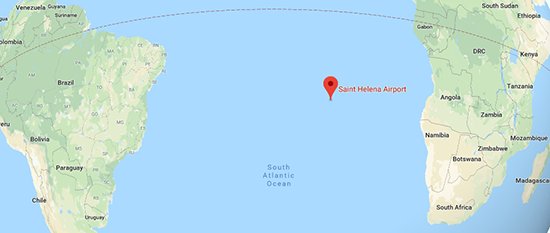“We know airports have been built [using foreign aid] and actually the runways are in the wrong direction because of the winds… it’s in one of the continents abroad. We know we’ve got that airport where we can’t take off and land because of the winds, the cross winds there.”
Esther McVey MP, 11 June 2019
Yesterday on LBC Radio, Conservative leadership contender Esther McVey was speaking about foreign aid and listing ways in which this money has been spent. One item on this list was an airport—on a continent abroad—that can’t have planes take off and land due to high winds and the runway being built in the wrong direction.
We think she was referring to St Helena airport—which is indeed abroad, lying midway between South America and Africa. St Helena is an island and a British overseas territory.

It was built with £285 million from the UK’s Department for International Development (DFID). DFID confirmed to us that the money was Official Development Assistance (commonly known as foreign aid)—St Helena being one of three British overseas territories receiving such money. Regardless, DFID is legally required to provide support to British overseas territories whether or not they’re eligible for foreign aid.
We actually wrote a factcheck on the subject back in May 2017. At the time we said that although the airport had been due to open in 2016, planned commercial operations were suspended after it was discovered that the wind shear was too severe for commercial planes to land there. That didn’t mean there were no flights taking off or landing though, as a small number of planes were moving through the airport.
Typically (due to issues with the wind, but also visibility and the proximity of natural hazards) planes need a four and a half hour window of good weather during which they can land on St Helena and take off again. This can be challenging due to the island’s exposed position in the South Atlantic. St Helena airport provides more information about the problems the weather presents on its website.
It’s not entirely clear whether the airport’s runway could have been built in a better direction, as Ms McVey says. However, a 2016 report by a committee of MPs found that “It is staggering that the Department did not foresee and address the impact of difficult wind conditions on landing commercial aircraft safely.”
But crucially, since we wrote our original factcheck in May 2017, the situation has changed. St Helena airport started running weekly commercial flights between the island and South Africa in October 2017. It also runs one flight a month connecting St Helena with Ascension Island, 700 miles to the north.
